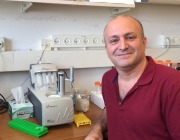Citation:
Abstract:
The leading risk factor for gastric cancer in humans is infection by Helicobacter pylori strains that express and translocate the oncoprotein CagA into host epithelial cells. Once inside host cells, CagA interacts with ASPP2, which specifically stimulates p53-mediated apoptosis and reverses its pro-apoptotic function to promote ASPP2-dependent degradation of p53. The X-ray crystal structure of a complex between the N-terminal domain of CagA and a 56-residue fragment of ASPP2, of which 22 residues were resolved, was recently described. Here, we present biochemical and biophysical analyses of the interaction between the additional regions of CagA and ASPP2 potentially involved in this interaction. Using size exclusion chromatography–multiangle laser light scattering, circular dichroism, and nuclear magnetic resonance analyses, we observed that the ASPP2 region spanning residues 331–692, which was not part of the ASPP2 fragment used for crystallization, is intrinsically disordered in its unbound state. By surface plasmon resonance analysis and isothermal titration calorimetry, we found that a portion of this disordered region in ASPP2, residues 448–692, binds to the N-terminal domain of CagA. We also measured the affinity of the complex between the ASPP2 fragment composed of residues 693–918 and inclusive of the fragment used for crystallization and CagA. Additionally, we mapped the binding regions between ASPP2 and CagA using peptide arrays, demonstrating interactions between CagA and numerous peptides distributed throughout the ASPP2 protein sequence. Our results identify previously uncharacterized regions distributed throughout the protein sequence of ASPP2 as determinants of CagA binding, providing mechanistic insight into apoptosis reprogramming by CagA and potential new drug targets for H. pylori-mediated gastric cancer.

